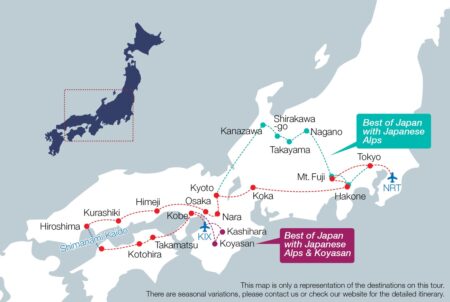Outline
- Introduction
- Brief overview of the topic
- Importance of offshore wind farms
- Introduction to Orsted and its role in renewable energy
- What is Orsted’s New Jersey Offshore Wind Farm?
- Project details
- Location and scale
- Timeline for development
- Significance of the Project
- Environmental benefits
- Economic impact
- Contribution to renewable energy goals
- Regulatory Approval Process
- Agencies involved
- Steps to approval
- Challenges faced and overcome
- Technological Innovations
- Advanced wind turbine technology
- Offshore construction techniques
- Maintenance and sustainability
- Environmental Impact Assessments
- Wildlife and marine ecosystem considerations
- Mitigation measures
- Long-term environmental monitoring
- Economic Impact on New Jersey
- Job creation
- Local business opportunities
- Long-term economic benefits
- Community Engagement and Support
- Public consultations
- Stakeholder involvement
- Community benefits program
- Orsted’s Global Offshore Wind Portfolio
- Comparison with other projects
- Lessons learned from past projects
- Future plans for expansion
- Challenges and Controversies
- Opposition from local groups
- Technical and logistical challenges
- Financial risks
- Government Policies and Incentives
- Federal and state support
- Tax incentives and subsidies
- Role of the Biden administration in promoting renewable energy
- Future of Offshore Wind in the US
- Market potential
- Upcoming projects
- Long-term vision for offshore wind energy
- Technological and Environmental Innovations
- Smart grid integration
- Battery storage advancements
- Biodiversity enhancement techniques
- Impact on Energy Prices
- Cost of production vs. traditional energy
- Effects on consumer energy bills
- Long-term cost benefits
- Conclusion
- Recap of the project’s significance
- Future outlook for renewable energy
- Call to action for continued support and investment
- FAQs
- What is the capacity of Orsted’s New Jersey Offshore Wind Farm?
- How does offshore wind energy benefit the environment?
- What are the economic benefits of offshore wind farms?
- How does the US government support offshore wind projects?
- What future offshore wind projects are planned in the US?
Article
US Gives Go-Ahead for Orsted’s New Jersey Offshore Wind Farm
Offshore wind energy is taking a significant step forward in the United States with the recent approval of Orsted’s New Jersey Offshore Wind Farm. This landmark project represents a crucial development in the nation’s renewable energy landscape, signaling a strong commitment to a greener future. But what exactly does this mean for New Jersey, the environment, and the economy? Let’s dive into the details.
What is Orsted’s New Jersey Offshore Wind Farm?
Orsted’s New Jersey Offshore Wind Farm, also known as Ocean Wind 1, is an ambitious project aimed at harnessing the powerful winds off the coast of New Jersey to generate clean, renewable energy. The project is set to be located approximately 15 miles off the coast of southern New Jersey and will feature a series of advanced wind turbines.
Spanning a vast area, the wind farm is expected to have a capacity of up to 1,100 megawatts (MW), enough to power over half a million homes. The timeline for the project’s development anticipates the start of construction in 2024, with operations commencing by 2026.
Significance of the Project
The approval of this offshore wind farm is a significant milestone for several reasons:
- Environmental Benefits: By generating clean electricity, the wind farm will help reduce reliance on fossil fuels, thereby decreasing greenhouse gas emissions and combating climate change.
- Economic Impact: The project is expected to create thousands of jobs during the construction and operational phases. Additionally, it will stimulate local economies by engaging numerous suppliers and service providers.
- Renewable Energy Goals: The wind farm will contribute significantly to New Jersey’s and the nation’s renewable energy targets, supporting the transition to a more sustainable energy system.
Regulatory Approval Process
Gaining approval for such a large-scale project is no small feat. Several federal and state agencies were involved in the rigorous approval process, including the Bureau of Ocean Energy Management (BOEM) and the New Jersey Board of Public Utilities (NJBPU).
The process involved comprehensive environmental and economic assessments, public consultations, and thorough reviews of potential impacts. Despite facing several challenges, including concerns from local fishing communities and environmental groups, the project successfully navigated the complex regulatory landscape.
Technological Innovations
Orsted’s project will employ cutting-edge wind turbine technology designed to maximize efficiency and minimize environmental impact. These turbines are equipped with advanced sensors and control systems to optimize performance and ensure reliability.
Offshore construction techniques have also evolved, enabling the safe and efficient installation of turbines in challenging marine environments. Furthermore, maintenance strategies incorporate remote monitoring and predictive analytics to ensure long-term sustainability.
Environmental Impact Assessments
A key aspect of the approval process was the environmental impact assessment. This included evaluating potential effects on local wildlife and marine ecosystems. Measures such as careful site selection, noise reduction techniques, and continuous environmental monitoring have been implemented to mitigate adverse impacts.
Long-term environmental monitoring will be essential to ensure that the project remains environmentally responsible, protecting the delicate balance of the marine habitat.
Economic Impact on New Jersey
The economic benefits of the offshore wind farm extend beyond job creation. The project will provide significant opportunities for local businesses involved in the supply chain, from manufacturing components to providing logistical support.
In the long term, the presence of a robust offshore wind industry in New Jersey could attract further investments and spur additional economic growth, positioning the state as a leader in renewable energy.
Community Engagement and Support
Community engagement has been a cornerstone of the project’s development. Orsted has conducted numerous public consultations to address concerns and gather feedback from stakeholders, ensuring that the community’s voice is heard.
Additionally, the project includes a community benefits program aimed at supporting local initiatives and enhancing public amenities, further solidifying community support.
Orsted’s Global Offshore Wind Portfolio
Orsted is no stranger to offshore wind projects. With a portfolio that includes numerous successful projects worldwide, the company brings a wealth of experience and expertise to the New Jersey venture. Lessons learned from previous projects have informed the development of Ocean Wind 1, ensuring best practices are applied.
Challenges and Controversies
Like any major infrastructure project, Orsted’s offshore wind farm has faced its share of challenges and controversies. Opposition from local groups concerned about visual impacts and potential disruptions to fishing activities has been vocal. Technical and logistical challenges, such as ensuring the stability and durability of turbines in harsh marine conditions, also pose significant hurdles.
Financial risks are another consideration, with substantial investments required upfront and uncertainties about future returns. However, the long-term benefits are expected to outweigh these risks, making the project a worthwhile endeavor.
Government Policies and Incentives
The success of offshore wind projects in the US is heavily influenced by government policies and incentives. Federal and state support, including tax incentives and subsidies, play a crucial role in making these projects financially viable.
The Biden administration has been particularly supportive of renewable energy, setting ambitious targets for offshore wind capacity and implementing policies to facilitate development. This supportive environment has been instrumental in advancing Orsted’s project.
Future of Offshore Wind in the US
The future of offshore wind in the US looks promising. With vast coastal resources and a growing commitment to renewable energy, the market potential is enormous. Numerous projects are in the pipeline, promising to significantly increase the nation’s offshore wind capacity in the coming years.
The long-term vision includes integrating offshore wind into a more flexible and resilient energy grid, enhancing energy security, and contributing to global efforts to mitigate climate change.
Technological and Environmental Innovations
Technological advancements continue to drive the offshore wind industry forward. Innovations in smart grid integration and battery storage are enhancing the reliability and efficiency of wind energy. Additionally, efforts to enhance biodiversity around wind farms, such as creating artificial reefs, are being explored to ensure environmental compatibility.
Impact on Energy Prices
One of the critical considerations for any energy project is its impact on consumer energy prices. While the initial cost of offshore wind energy is higher than some traditional energy sources, economies of scale and technological advancements are driving costs down. In the long term, offshore wind is expected to provide a stable and affordable source of energy, benefiting consumers.
Conclusion
The approval of Orsted’s New Jersey Offshore Wind Farm marks a significant milestone in the US’s journey towards a sustainable energy future. This project not only promises substantial environmental and economic benefits but also sets a precedent for future offshore wind developments. As we look to the future, continued support and investment in renewable energy will be crucial in addressing climate change and securing a greener, more sustainable world.
FAQs
What is the capacity of Orsted’s New Jersey Offshore Wind Farm? The wind farm is expected to have a capacity of up to 1,100 megawatts (MW), enough to power over half a million homes.
How does offshore wind energy benefit the environment? Offshore wind energy generates clean electricity, reducing reliance on fossil fuels and decreasing greenhouse gas emissions, which helps combat climate change.
What are the economic benefits of offshore wind farms? Offshore wind farms create jobs, stimulate local economies, and provide long-term economic growth through the development of a robust renewable energy industry.
How does the US government support offshore wind projects? The US government supports offshore wind projects through policies, tax incentives, subsidies, and a regulatory framework that facilitates project development.
What future offshore wind projects are planned in the US? Numerous offshore wind projects are in the pipeline, with significant expansions planned along the East Coast and other coastal regions, contributing to the US’s renewable energy goals.








![How to Find Subordinate City Clues Evony [Updated 2024] Image: Subordinate city clues Evony game interface showing map and icons](https://digitalnexio.com/wp-content/uploads/2020/03/Subordinate-City-Clues-450x253.png)